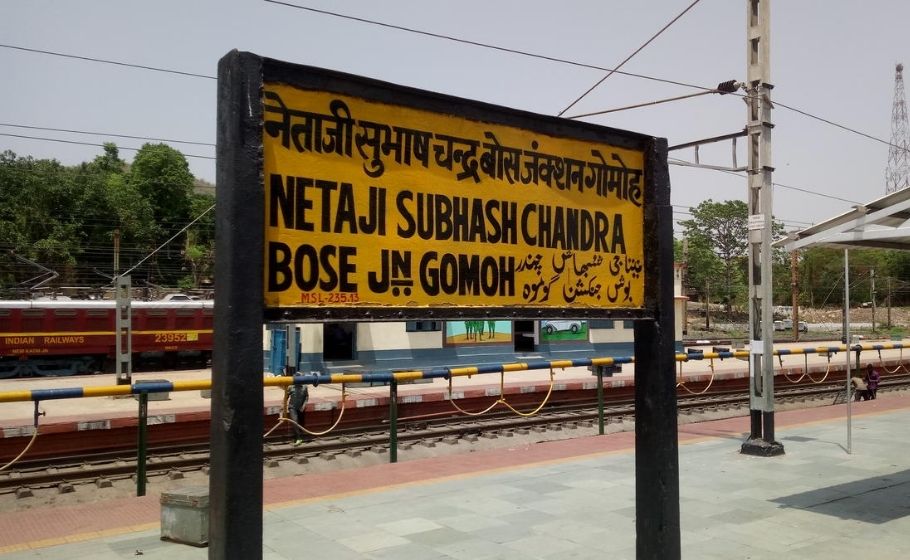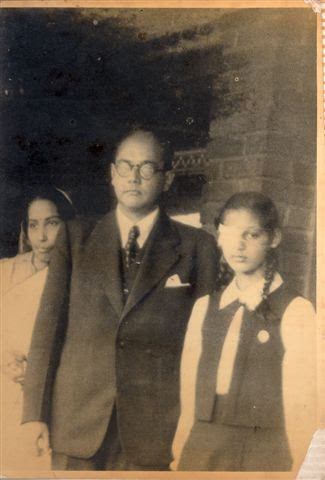
On Kalka Mail, Netaji link adds to travel experiences
Gomoh station, named as Netaji Subhas Chandra Bose Junction was the last place where he was seen alive in India before world came to know about his escape. It’s one of the most exciting tales of escape of all times; from Gomoh to Delhi it was history on wheels.

On a night in 1941, as the Kalka Mail, with hundreds of passengers on board, started chugging out of a dimly lit Gomoh junction in modern day Jharkhand (then under Bihar), neither the Railways staff nor the passengers had the slightest hint that during that long journey to Delhi, a thrillingly, new chapter in India’s Independence movement new being scripted.
In disguise, Netaji Subhas Chandra Bose, was on his way out of the house arrest, from the clutches of the British. Having covered the distance from his posh Elgin Road home hugging the up-market Park Street in Calcutta on the black German Wanderer sedan (BLA 7169) on January 16, 1941 with his nephew Sisir at the wheels, Netaji boarded the Kalka Mail at Gomoh.
Gomoh station, named as Netaji Subhas Chandra Bose Junction was the last place where he was seen alive in India before world came to know about his escape. It’s one of the most exciting tales of escape of all times; from Gomoh to Delhi it was history on wheels. The courageous leader, passing different countries, reached Germany.
Just days ahead of the year long celebrations of Netaji’s 125th birth anniversary kicked off on January 23, 2021, the iconic Kalka Mail was renamed as Netaji Express.
“Indian Railways is happy to announce the naming of 12311/12312 Howrah-Kalka Express as ‘Netaji Express’,” the Ministry of Railways said.
Railway Minister Piyush Goyal tweeted: “Netaji’s prakram had put India on the express route of freedom and development. I am thrilled to celebrate his anniversary with the introduction of ‘Netaji Express’.”
According to a senior officer of eastern Railway, normal operations of trains, including the Kalka Mail, have been suspended from March last year due to COVID-19. However, special trains are operating. Requesting anonymity, the officer said the Railway Board had sought the suggestion of a train which was associated with Netaji. “We had suggested Kalka Mail,” he told The Federal.
Related news | In Netaji’s birthplace, Cuttack, people reminisce the good times
Incidentally, the train has a long, distinguished past. The year after Shimla was declared the summer capital of British India in 1864, Yamuna bridge was opened at Allahabad on August 15, 1865, and Kolkata (then Calcutta) and Delhi were directly linked by rail. The very next year, in 1866, The 1 Down/2 Up Mail train, the predecessor of the Kalka Mail, started running, joining the two historical cities: Calcutta and Delhi.
Introduced by the East Indian Railway Company, the Kalka Mail began service as the “East Indian Railway Mail”. Its run was extended from Delhi to Kalka in 1891.
Those days, it was the principal mechanism by which British civil servants moved to their summer capital in Shimla from Calcutta with the entire government machinery traveling on the train at the onset of the summer months and returning by it at the end of the season. Both stations, Howrah as well as Kalka, had internal carriageways running along the platform so that the Viceroy and other top officers could drive right up to their rail coaches.
While the carriageway (between platforms 8 and 9) at Howrah is still used, the one at Kalka has been converted into a platform. With the rationalisation of train numbering in the 1990s, Kalka Mail lost its ‘1 Up /2 Dn’ numbering; it’s now 12311 from Howrah and 12312 from Kalka end.
The train is featured in a short story by ace filmmaker and writer Satyajit Ray. In the story, The Mystery of the Kalka Mail (Baksho Rahasya), the three main characters travel from Calcutta to Delhi and on to Kalka on the train. The plot involves a stolen diamond and an unpublished manuscript. The story was also made into a radio play.
The renaming of the train has brought happiness to many, including those close to Netaji and his family.
“We are very happy with the name change in line with the train’s heritage linked to Netaji Subhas Bose,” tells an elated Sanjay Choudhry from Bengaluru.
Speaking exclusively to The Federal, Choudhry reminisced about his travel by Kalka Mail numerous times. He had even travelled by the train with his mother, Bharati Asha Choudhry, one of the few surviving women officers of the Indian National Army (INA).

Bharati, daughter of Sati Sen and freedom fighter father Anand Mohan Sahay, was born on February 2, 1928, in Kobe, Japan, where she had her early schooling. She pursued her high school education and was enrolled in the Showa Women’s University, Tokyo, for higher education. Her mother, Sati, was the niece of ‘Deshbandu’ Chittaranjan Das.
Naturally, the blood of a freedom fighter was in her veins. In the beginning of 1945, at the age of 17 she decided to join the INA. According to Choudhry, after two months of rigorous emergency training at Bangkok, second lieutenant Bharati joined Rani of Jhansi Regiment, the women’s regiment of INA, as they headed towards the Burma border.
Netaji had announced the formation of the regiment on July 12, 1943. Led by Captain Lakshmi Swaminathan (known as Lakshmi Sahgal), the unit was raised with volunteers from the expatriate Indian population in Southeast Asia. It had two branches: combat and nursing. Bharati, who had met Netaji in Tokyo when she was 16, chose the former.
Choudhry intends to travel on the Netaji Express, in the future. “Of course I’ll love to travel on the Netaji express,” he said adding, “I would be extremely happy if the pictorial depiction of Netaji and INA are put up on the carriages of the train, so that the passengers get to know Netaji’s valour and past.”
However, even before the announcement of normal operations of trains, Jayeeta Roy, 50, her businessman husband Indrajit Roy and son Jayjit had already made up their mind to visit Shimla in March, 2021. Instead of taking a flight from Kolkata, they are looking forward to a ride on the Netaji Express from Howrah to Kalka.
Related news | Portrait of Netaji or Bengali actor? Row breaks out on President’s tweet
Though there are a number of options by rail, including the prestigious Rajdhani express (one from Howrah and another from Sealdah), Duronto and other AC deluxe trains, Jayita, says, adding that the Kalka Mail offers a different experience.
The Roys are a well-known family of Bolpur town, 150 km north of Kolkata. During Netaji’s Calcutta-Gomoh drive, he had reportedly first gone to Shantiniketan in Bolpur in Birbhum district where he took the blessings from Nobel laureate Rabindranath Tagore before setting out for Delhi and again returned to Burdwan district.
Decades back, Jayita had travelled on the Kalka Mail and she still cherishes the journey. That time though, Jayeeta concedes, she was unaware that Bose too had travelled on the same train.
Incidentally, Netaji’s father Janakinath Bose was the advocate of Jayati’s businessman grandfather DN Soor and his brother and NN Soor in Odisha’s Cuttack city. Jayita was born and brought up in Cuttack. The Boses and Soors were family friends.
Jayeeta also recalls her several visits to Netaji’s ancestral home – now turned into the Netaji Birthplace museum in Cuttack’s Odia bazaar. Netaji’s daughter Anita and nephew Pradip Bose had visited Jayita’s Shaikh Bazar, Cuttack, parental home in 1961.
“In terms of a rich past and aura, there are very few trains that can match Kalka Mail,” puts former Director Public Relations at Indian Railway’s headquarters, Rail Bhawan (New Delhi) MY Siddiqui. “The train’s rake, consisting of general, sleeper and air-conditioned coaches caters to all sections of travelers. Unless booked early, it’s not that easy to get a reserved berth in it. That shows, passenger loyalty to it has remained intact, always. It will remain so in the future,” he believes.

